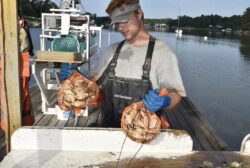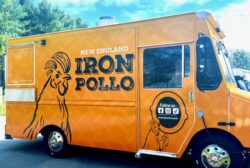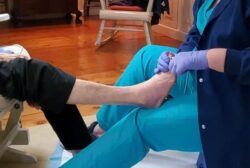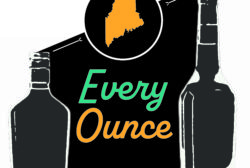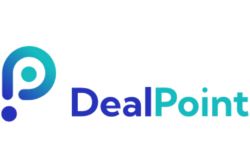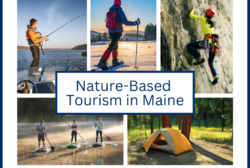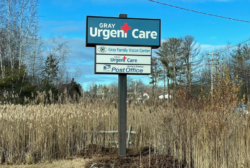AQUACULTURE & FISHING
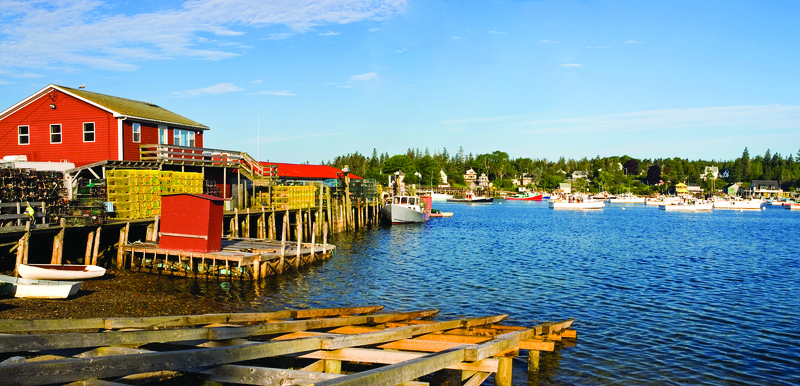 As a fishing or aquaculture business, your sales have likely been disrupted by closures and restrictions on the food service sector, tourism and international trade changes. You may also have faced issues in other areas such as processing and transportation/logistics.
As a fishing or aquaculture business, your sales have likely been disrupted by closures and restrictions on the food service sector, tourism and international trade changes. You may also have faced issues in other areas such as processing and transportation/logistics.
Moving Your Business Forward
While there are many uncertainties ahead, you should take some time to consider how you are doing, and how you might navigate challenges in the long-run, should the market downturn continue. We’ve compiled key information to consider as you move forward. As always, never hesitate to reach out to a Maine SBDC advisor for one-on-one assistance.
Now is the time to stop, review and assess the current state of your fishing / aquaculture business. It’s important to assess the impact the pandemic has had and will continue to have on your business. Decisions you make now will have a long-lasting impact on your future. To assess your business, you should look at each aspect of your business and how it has been impacted by the pandemic.
Operations & Safety
- What parts of your business are most challenging due the pandemic?
- Employees – How will you keep them safe? How many staff will you have working? Will you provide them with PPE? Do you need to update your employee handbook or create new procedures?
- Supply Chain – What if your supply chain is disrupted? Do you have a backup?
- Compliance – Do you need new equipment, materials, or PPE to keep your customers and employees safe?
Finances & Financial Planning
- Revenue – What products are most profitable? What products are in-demand? Which revenue streams have been most impacted? What is causing the impact on your revenue?
- Are your customers still able and willing to pay?
- What might be deterring customers from purchasing your services?
- Have you gained customers? Are your customers different this year?
- Expenses – Are there expenses that can be cut? How much are your fixed expenses? What expenses have increased because of the pandemic? Are there new cleaning and PPE expenses to account for?
- Cash – Have you determined how much cash your business has available to move forward? How long can you run your business at lower-capacity with the available resources? Will you need to look for additional financial resources?
Customers & Marketing
- Plan – When did you last update your marketing plan? Have you updated your marketing plan to be more digital and focused on engaging customers through web/social media platforms? Is your marketing consistent?
- Customers – How is your customer doing? Have their behaviors, spending, or habits changed? How will this impact your revenue? Are different customers purchasing from you than before? Have you lost some customers?
- Products – What is your best-selling product? Are there unique or new products or services you can offer based on the pandemic?
- Communication – How do you engage your customers? How do you make them feel safe? How do you communicate with them? Do you utilize the internet or e-commerce to promote and/or sell your products/services? Do customers know where to find you and the hours you’ll be there?
There is no question that rebuilding your business will take time, effort, and likely money. Consider the following as you work to capitalize on the ‘new normal’:
Reboot Operations
- Staffing – Do you need to make changes to the staffing schedule to accommodate safety protocols? Staggered shifts? Clear written policies are essential for employees and customers. Talk with your attorney if you have further concerns related to liability.
- Suppliers – Communicate with suppliers about critical products. Do they have what you need? Do they anticipate shortages? Order early if necessary to ensure you have what you need.
- Packaging – Do you need to re-think your packaging to expedite handling with the customer transaction?
- Sales – Do you take pre-orders to expedite sales and contactless transactions? Is there a way for customers to buy online and pick up?
Financial analysis
- What is making your business money?
- Cash is king – do a cash flow projection to forecast your need for cash in the coming months.
- It is hard to run a business and keep up with the bookkeeping. Is it time to consider the benefits of a bookkeeper so that you know where the numbers are at any given time?
- Do you need extra funds? Better to go to the lenders sooner rather than run out of funds.
Revive Demand
- Make sure you are communicating new measures implemented that may not be visible to customers (i.e. minimized human handling, testing procedures across your entire supply chain) so they feel safe dealing with you.
- Identify and capture specific pockets of growth. Have an idea for a new product? Do a pilot project to test the market. Engage the customers in tastings or product feedback.
- Use tactical pricing. Don’t give your services away or discount your services without understanding your costs. Emphasize the value in your product.
- Focus on building brand loyalty by demonstrating high ethical standards, like the use of PPE and constant communication.
- Make it easy for customers – facilitate online ordering and payments.
Communicate, Communicate, Communicate
- Update your customers regularly on the status of your business
- Stay in touch with your networks – with your associations, stakeholders, advisors, partners, customers, suppliers, friends, family, press, etc.
- Utilize social media and digital marketing outlets
- Do you have a website? Could it use a re-fresh? Do you tell your story there? Customers like to feel connected to the source of their food.
- Remember, your customers and employees are looking to you to let them know how you are going to keep them safe.
How long can your business last? Will you have enough cash to get you through the winter? What if an employee gets sick or there is another surge in the virus? What are your next steps?
All of these questions – and more – can be answered to some extent by business planning. A business plan can be a simple assessment of where your business stands to help guide you and your future business decisions. It does not have to be a long, elaborate document that takes months to complete.
A business plan and the accompanying cash flow projections allow you to set specific goals. It also helps you better understand where you are and what you need to do to survive and succeed. Planning helps you better understand “what if” scenarios.
Planning also helps you manage crises better. It helps you respond in a time of panic, providing guidance on situations that might arise and how to respond confidently. Trust us – your future self will thank you for taking this time to create a thoughtful plan.
Feeling overwhelmed? Need help? Maine SBDC business advisors are experts in business planning. Our strength is that we can be a part of your team and help you review the big picture, discuss your goals and help you wade through the many options and resources to draft a plan to achieve those goals. We can work with you to put together a cash flow projection to be part of that road map. If you need funding, we can help you prepare the documents needed to accompany a loan application. Maine SBDC Business Advisors can guide you through the business planning process and help you feel confident about your next steps (and the future of your business).
REQUEST ADVISINGResources from Industry Organizations
USDA Resources & AssistanceSeafood Trade Relief Program (STRP) – Regulatory Tariff Support
If you are a U.S. fisherman impacted by retaliatory tariffs, you may qualify for funding through the Seafood Trade Relief Program (STRP). The STRP is part of a relief strategy to support fishermen and other producers while the administration continues to work on free, fair and reciprocal trade deals to open more markets to help American fishermen compete globally.
Sign-up for relief through the program from September 14, 2020 through December 14, 2020 by submitting an application through your local USDA Service Center.
For more details including instructions and application, please go to: https://www.farmers.gov/Seafood
Coronavirus Food Assistance Program 2 for Aquaculture Producers
Are you an aquaculture producer whose operation has been directly impacted by the coronavirus pandemic? USDA is implementing Coronavirus Food Assistance Program 2 for aquaculture producers who continue to face market disruptions and associated costs because of COVID-19.
Coronavirus Food Assistance Program 2, or CFAP 2, will provide producers with financial assistance that gives them the ability to absorb some of the increased marketing costs associated with the COVID-19 pandemic. USDA will accept CFAP 2 applications from September 21, 2020 through December 11, 2020. Learn more at farmers.gov/cfap.
Coastal Enterprises, Inc.
Coastal Enterprises, Inc. (CEI) provides advising and financing to fisheries and aquaculture businesses to improve their long-term viability, create and maintain quality jobs, safeguard marine-related infrastructure and environments, and help preserve the cultural integrity of Maine’s working waterfront.
Maine Aquaculture Innovation Center
The Maine Aquaculture Innovation Center (MAIC), in Walpole, was established to assist in developing economically and environmentally sustainable aquaculture opportunities in Maine. MAIC sponsors and facilitates innovative research and development projects, but also provides businesses access to incubator space.
University of Maine
The University of Maine has a vast amount of resources to help fishing and aquaculture-based small businesses. Located in Franklin, Maine, their Center for Cooperative Aquaculture Research provides access to R&D, product development, business incubation and trial and laboratory services. They can help companies develop their business plans, find a site for commercial operations, develop and protect intellectual property, put together a management team, secure investment capital, and to go commercial.
UMaine is also one of NOAA’s Sea Grant programs which focuses on Maine’s coastal communities and provides research and helps develop the marine workforce through educational programs, fellowships and scholarships. More info here: https://seagrant.umaine.edu/
Maine Coast Fishermen’s Association
MCFA is an industry-led non-profit that works on behalf of the community-based fishermen of Maine. Their goal is to ensure that Maine’s fishing communities can thrive today, tomorrow, and forever. They advocate for policies and regulations that create healthy and sustainable fisheries, securing access to those fisheries by protecting working waterfront, permit banking, and through policy initiatives, and promote fishing and business innovation through research and community development.
Maine Aquaculture Hub
The Maine Aquaculture Hub was formed to help the aquaculture industry in Maine overcome barriers to growth. Their goals include developing a 10-year roadmap for aquaculture in Maine, expand access to training, and build capacity that encourages development and growth.
Maine Aquaculture Association
The Maine Aquaculture Association (MAA), located in Hallowell, is the oldest state aquaculture association in the country. Its members (>150) grow finfish, shellfish and sea vegetables in both fresh and saltwater using a variety of innovative farming methods. MAA and its members are leading the way in the development of new and environmentally sustainable ways to provide America with healthy, fresh seafood. MAA is a network of people who face many of the same challenges you do on the water, with the banks, with the legislature and government agencies, and in the marketplace.
State of Maine Department of Marine Resources
The Department of Marine Resources is established to conserve and develop marine and estuarine resources; to conduct and sponsor scientific research; to promote and develop the Maine coastal fishing industries; to advise and cooperate with local, state, and federal officials concerning activities in coastal waters; and to implement, administer, and enforce the laws and regulations necessary for these purposes.
Maine Technology Institute
MTI offers grants, loans, equity investments, and services to businesses, organizations, and individuals to support Maine’s innovation economy, including Marine technology and aquaculture businesses.
NOAA’s National Sea Grant Office administers funding to the Sea Grant colleges throughout the nation and oversees several national funding competitions. They also facilitate both the Department of Commerce designation of Sea Grant College Programs and the Sea Grant program assessment process. Learn more.
Sea Grant Seafood Contacts in Maine
|
Gayle Zydlewski |
Director |
207-581-1442 |
|
|
Beth Bisson |
Associate Director/Extension Leader |
207-449-8350 |
|
|
Chris Bartlett |
Marine Extension Associate |
207-853-0967 |
|
|
Dana Morse |
Marine Extenstion Associate |
207-563-8186 |
|
|
Natalie Springuel |
Coastal Community Development |
207-288-2944×5834 |
|
|
Jaclyn Robidoux |
Marine Extension Associate |
774-571-2938 |
|
|
Keri Kaczor |
Marine Extension Associate |
207-832-0343×17 |
|
|
Heather Sadusky |
Marine Extension Specialist, Maine Aquaculture Hub Coordinator |
401-556-2650 |
|
|
Hannah Robbins |
Communications Manager |
207-581-1442 |
NOAA Fisheries Regional Aquaculture Coordinators:
|
Kevin Madley |
Greater Atlantic Regional Aquaculture Coordinator |
978-282-8494 |
|
|
Chris Schillaci |
Greater Atlantic Regional Aquaculture Coordinator |
978-281-9311 |
The National Fisheries Institute has developed health and safety resources to help you (and your customers) navigate the pandemic. These resources cover FAQs on consumption, workplace safety and more.




